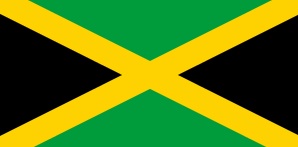
Vision & Mission Statement
Restore. Modernize. Expand.
To recommence a safe, reliable and affordable freight and passenger rail service throughout Jamaica, to synchronize with other modes of transportation, with emphasis on the cost effective movement, while meeting the needs of the JRC, its customers and stakeholders in an environmentally friendly atmosphere, always striving to develop the communities served.

L-R (Front) Ann Marie Heron, Ferris Ziadie (Chairman), Ann Marie Chin
L-R (Back) Keith Murray, John Rosen, George Clue, Fitzroy Williams (Chief Executive Officer), David Allen, Christopher Leckie
Brief History of the Jamaican Railway
The Jamaican railway originated as a private and comparatively small undertaking in 1843, when the Smith’s Brother (William and David) proposed to construct a rail system, which was favourably received by the House of Assembly. Construction commenced in 1844 under the name Railway Company.
The Jamaican railway system was the first railway opened to traffic outside Europe and North America, and the second British Colony after Canada, only twenty (20) years after operations in the United Kingdom.
The operative factors influencing demands for railway construction initially seem to have been the concern and optimism of its promoters (the Smith’s Brothers), and the effect that the railway would have on the economy and society in general.
The first railway locomotives (steam) to be seen in Jamaica arrived and were christened “Projector” and “Patriot”. These pioneer locomotives were followed shortly by others which were named “Emancipation”, “Perseverance”, and “Success.”
After 34 years (1845 – 1879) and 24.25miles/41.0km of railtrack, the Jamaica Government purchased the railway from the Railway Company ending the first phase of the railway history under private management.
Between 1879 and 1900, management/operating the railway system was by the Jamaican Government and an American consortia (The West India Improvement Company), whereby 160miles/255.8km of railtrack was constructed, linking three (3) major ports, in Kingston, Port Antonio, and Montego Bay.
In 1900, as a fully Jamaica Government owned entity, operating as the Jamaica Government Railway, 34.5 miles/55.5 km of rail track was constructed, linking the US Air Base in Vernamfield, Clarendon.
The Jamaican rail transportation system marked the dawn of innovation involved significant implications for the economy and society in general.
Nevertheless, it can be justifiable that there has since been subsequent periods of its history when the contributions of the railway to the Jamaican society and economy have exceeded the relatively limited expectations of its early promoters.
Its major role, initially was the mass transportation of goods and people. The subsequent railtrack extended throughout the island, allowed more access to the fertile interior areas where the agriculture industries need support, which effected closer social and economic integration and extended domestic markets.
The discovery of bauxite deposits in the 1940s, brought about the relative need to utilized railway as the preferred mode of transporting the bauxite extract to be processed and shipped.
In 1992, public rail transport services ceased operating, although bauxite industry continue to operate, in part using the JRC lines.
The railway is poised to command a major role in the development of an integrated National Transport System, which will significantly reduce the carnage and congestion on the nation’s roads, while enhancing production in the offering of a safe, reliable, and viable transportation alternative.
To-date, plans are being pursued to rehabilitate the railway network, and increase mobility for the country to compete more effective in a continually changing global market.
Privatisation of The Jamaica Railway Corporation

The Government of Jamaica (GOJ) has been actively pursuing efforts for the privatisation of rail services since the cessation of the services in 1992.
The main objective of the privatization was to identify a private sector investor with adequate financial capacity to undertake the rehabilitation, operations, management and maintenance of rail transportation in Jamaica without significant financial support from the GOJ.
Towards this end, there were negotiations over the years with Indian, Canadian, Chinese and American investors who all expressed interest in rehabilitating the railway. However, these negotiations did not advance to the stage of project implementation.
The Jamaica Railway Corporation (JRC) proposed an alternative solution for the build-out of the railway service. The Cabinet duly considered and approved the recommended new arrangement for the resuscitation of the railway. Acting in accordance with Cabinet Decision No. 43/17 dated November 20, 2017, the JRC identified a Jamaican group of investors or Consortium led by Mr. Adam Stewart to participate as Joint Venture (JV) partners in the Phase 1 Railway Rehabilitation Plan for Appleton to Montego Bay.
The JRC and the Consortium signed a Memorandum of Understanding (MOU) on March 23, 2018 which provides for the finalisation of Technical and Financial Plans within six (6) months of the signing of the MOU.
It is anticipated that the parties will negotiate and enter into a JV Agreement to facilitate the investment and the associated works to implement the project.
